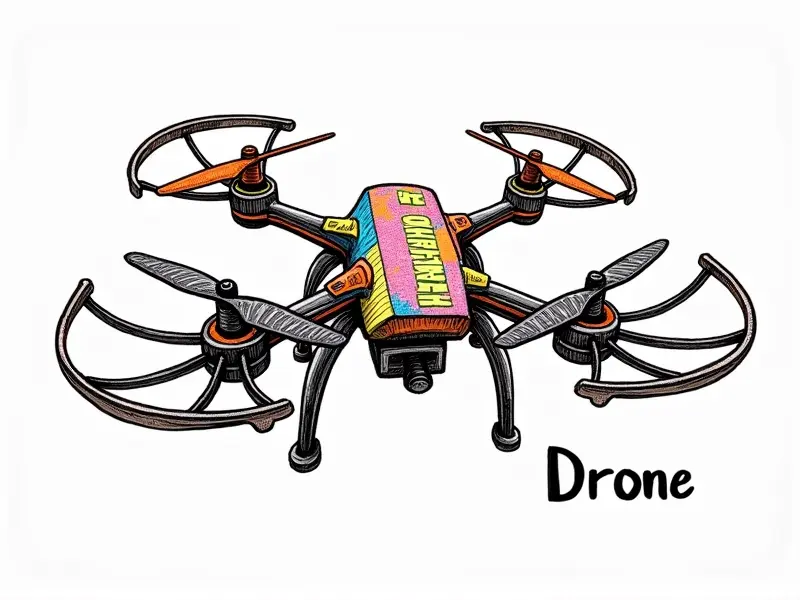DIY drone autopilot guide

Build an Intelligent Drone Autopilot System
Creating your own intelligent drone autopilot system is a fascinating project for any RC enthusiast or electronics hobbyist. This guide will walk you through the process of building and programming an autonomous drone control system from scratch, ensuring that you have all the necessary knowledge to create a reliable and efficient autopilot.
DIY Drone Autopilot for RC Enthusiasts
For those who love tinkering with remote-controlled devices, constructing your own DIY drone autopilot is an exciting challenge. This guide provides step-by-step instructions on how to build a robust autopilot system that can handle various flight scenarios and missions.
Selecting the Right Components
- Microcontroller: Choose a powerful microcontroller like Arduino or Raspberry Pi for processing flight data.
- Sensors: Include GPS, accelerometers, gyroscopes, and barometric pressure sensors to ensure accurate navigation.
- Motors and Propellers: Select high-quality motors and propellers that can handle the weight of your drone and provide sufficient thrust.
Programming Your Autopilot System
To program your autopilot, you'll need to write code for flight control algorithms. This involves:
- PID Control: Implement Proportional-Integral-Derivative (PID) loops to stabilize the drone during flight.
- Navigational Algorithms: Develop path planning and obstacle avoidance functions using advanced navigation techniques.
Create an Autonomous Drone with DIY Kit
A DIY kit can simplify the process of building your autonomous drone. These kits typically include pre-assembled components that make it easier to get started, even for beginners. Follow these steps:
- Assemble the frame and mount all necessary sensors.
- Connect the microcontroller and power supply units.
- Install flight control software on your microcontroller.
Crafting Your Own Drone Control Software
The heart of any drone autopilot system is its control software. Here’s how to craft a custom solution:
- Flight Modes: Define different flight modes such as manual, stabilized, and automatic.
- Data Logging: Implement logging capabilities for debugging and performance analysis.
How to Make a Drone Autopilot from Scratch
Making your drone autopilot from scratch requires careful planning and execution. Start by designing the hardware layout, then move on to software development:
- Hardware Design: Sketch out the electrical connections and mechanical assembly.
- Software Development: Write code for flight control algorithms using C or Python.
Beginner-Friendly Guide to DIY Drone Autopilot
If you're new to building drones, this guide will help you get started with the basics. Follow these simple steps:
- Learn Basic Electronics: Understand how circuits work and how to solder components.
- Study Flight Control Algorithms: Familiarize yourself with PID control, Kalman filters, etc.
Build and Program Your Own Drone Autopilot
Building your own drone autopilot involves both hardware assembly and software programming. Here’s a detailed breakdown of the process:
- Hardware Assembly: Assemble the frame, motors, propellers, and sensors.
- Software Programming: Write flight control algorithms and test them in simulation environments.
Easy Steps to Constructing a Drone Autopilot
Constructing your drone autopilot can be broken down into easy steps. Follow these guidelines for a smooth build process:
- Select Components: Choose the right microcontroller, sensors, and motors.
- Assemble Hardware: Connect all components according to your design layout.
- Program Software: Develop flight control algorithms and test them thoroughly.
Craft Your Own Drone Control System at Home
You can craft a drone control system right from the comfort of your home. Here’s how to do it:
- Design Layout: Plan out the electrical and mechanical components.
- Build Prototype: Assemble a prototype using basic tools like soldering irons and multimeters.
Create an Autonomous Drone Pilot with DIY
Creating an autonomous drone pilot involves both hardware and software development. Here’s how to proceed:
- Choose Components: Select high-quality sensors, motors, and a powerful microcontroller.
- Develop Software: Write flight control algorithms that can handle various mission profiles.
DIY Drone Navigation System Explained
A DIY drone navigation system is crucial for autonomous flights. Here’s how to implement it:
- Sensor Integration: Integrate GPS, accelerometers, and gyroscopes for accurate positioning.
- Navigational Algorithms: Develop path planning algorithms that can navigate through complex environments.
Conclusion
Building your own drone autopilot system is a rewarding endeavor that combines electronics, programming, and mechanical engineering. By following the steps outlined in this guide, you’ll be able to create an intelligent and autonomous drone control system tailored to your specific needs. Whether you’re a hobbyist or a professional, crafting your own DIY drone autopilot can open up new possibilities for innovation and exploration.

